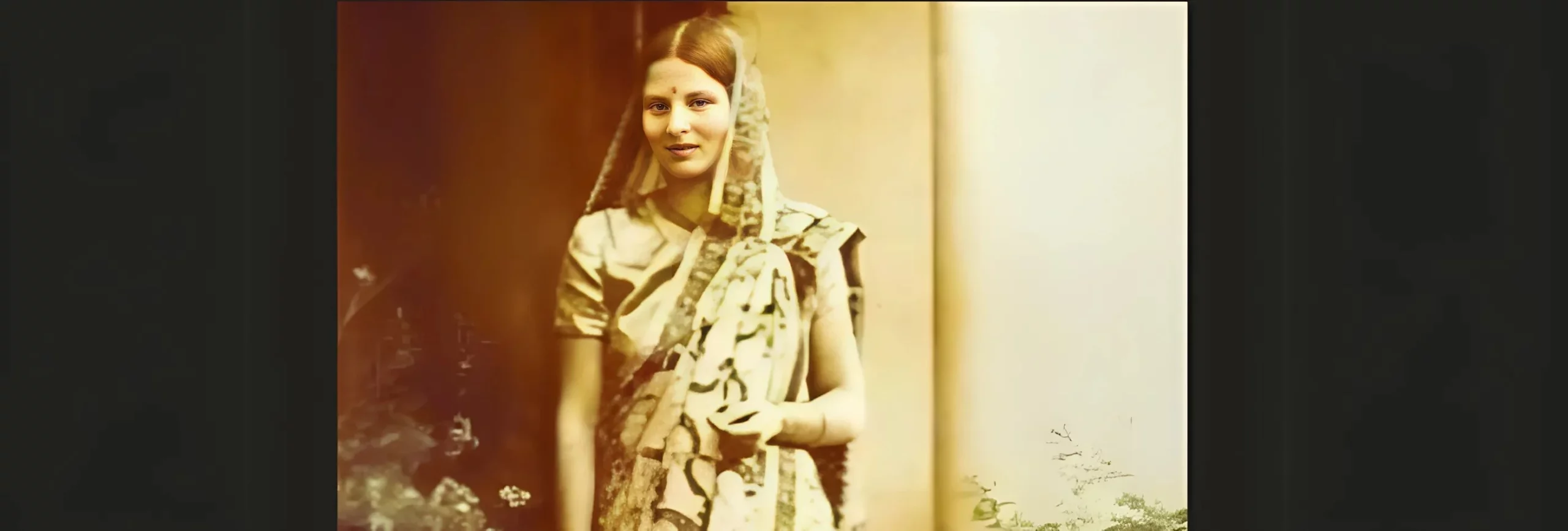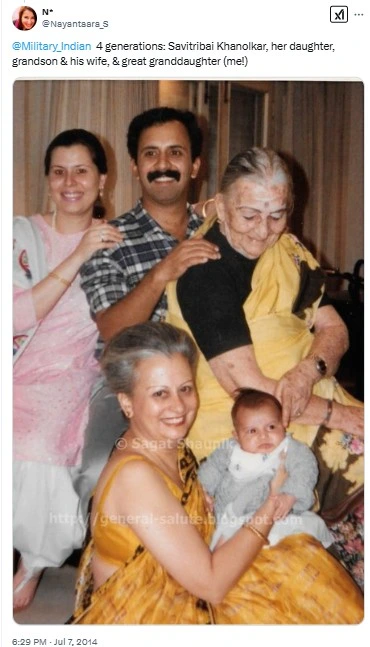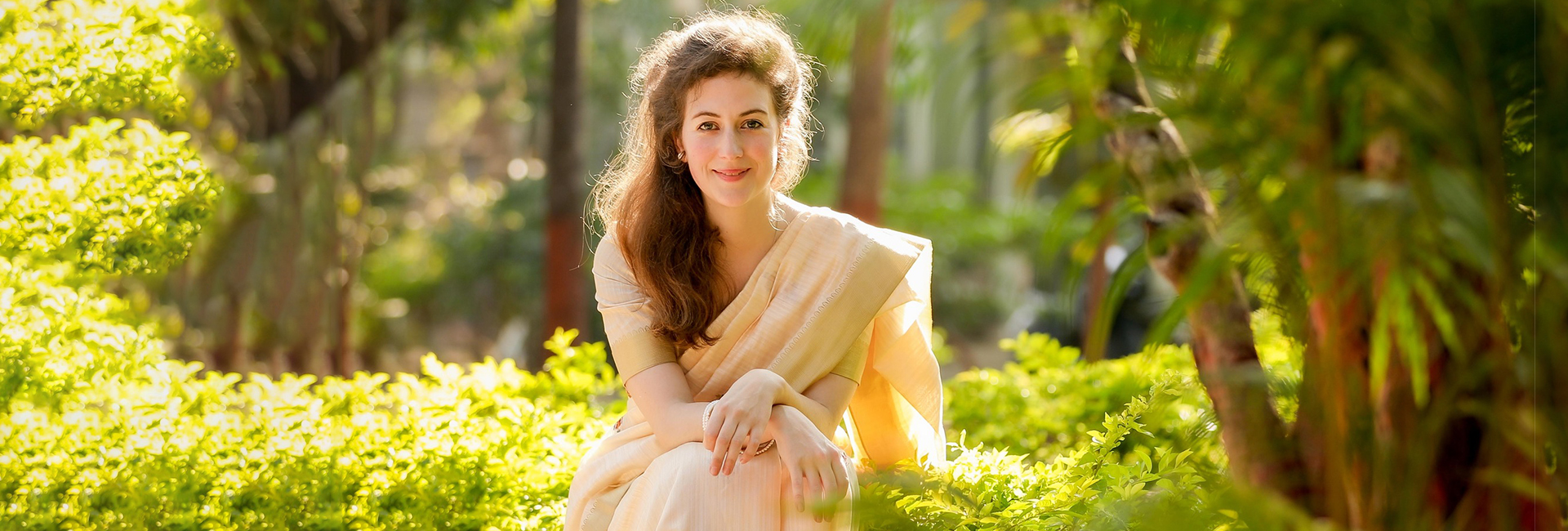Savitri Khanolkar, a Swiss national of mixed Hungarian Russian descent, who married an Indian Army officer in 1932, has etched her name in history as the designer of the Param Vir Chakra, India’s highest military award for gallantry.
In a time when cultural divides were firmly in place, Eve Yvonne Maday de Maros, a young girl, found herself drawn to a world completely different from her own. The daughter of European parents, she had spent her early years surrounded by Western traditions. Yet, a chance encounter with an Indian Army officer, Vikram Khanolkar, would redefine her life’s course and eventually lead her to play a unique role in India’s military history.
Eve, born in Neuchâtel, Switzerland, to a Hungarian father and a Russian mother, met Vikram Khanolkar in 1929 at the age of 16. Her father was a professor of sociology at the University of Geneva, while her mother taught at the Rousseau Institute, a renowned centre for educational studies. Growing up in an intellectually inclined household, Eve had a deep love for painting and art, which shaped her creative sensibilities from an early age.
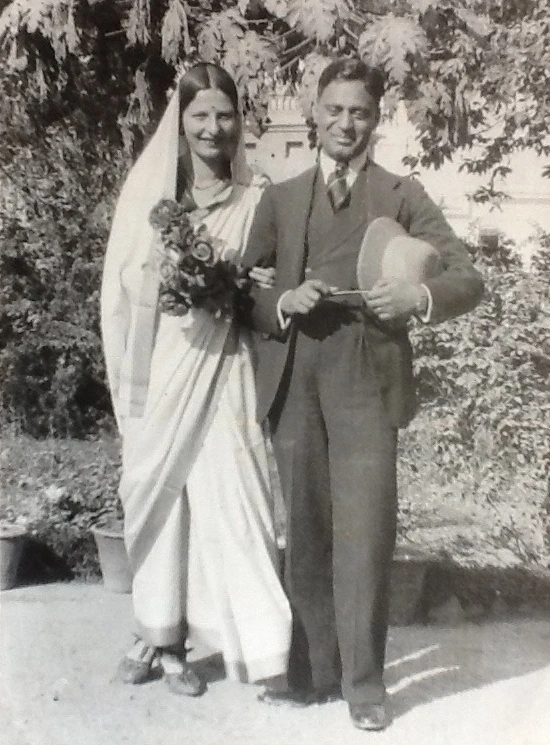
Savitri and Vikram Khanolkar
Vikram, a young Indian Army cadet from Maharashtra was undergoing training at Sandhurst, United Kingdom and had travelled to Switzerland for a break. Eve and Vikram’s meeting sparked an instant connection, even though Vikram was much older to her. They shared long conversations on philosophy, history, and their visions of the future, bonding over ideas.
As their relationship deepened, Eve made a decision that would shape the rest of her life. In 1932, she left behind her familiar world, against the wishes of her father and embraced Vikram’s homeland, India, beginning a journey that would forever tie her to its culture, traditions, and history.
Becoming Savitri: A cultural and spiritual rebirth
Eve’s transition to Savitri was not just about adopting a new name; it was a conscious and deliberate embrace of Indian traditions. She turned vegetarian, studied Sanskrit, read Hindu scriptures, and became well-versed in the philosophy and customs of the land she now called home. Her devotion to understanding Indian traditions went beyond superficial adjustments; she lived and breathed the culture, wearing traditional sarees, following rituals, and preparing Indian meals.
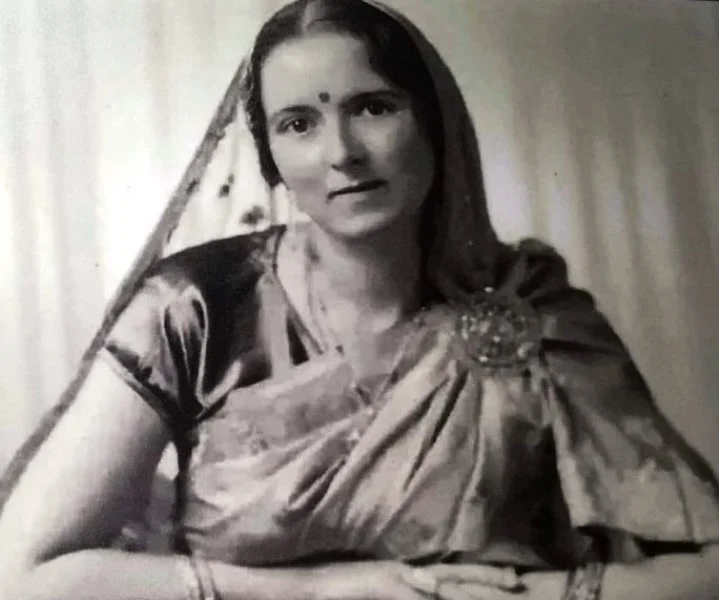
Savitri Khanolkar
She often insisted that she had been “born in Europe by mistake,” believing herself to be an Indian at heart. She fiercely rejected being labelled a “foreigner” and took offense at anyone who dared to call her one.
Her sincerity and commitment earned her the respect of those around her. Unlike many who struggle to adapt to an entirely different environment, Savitri’s transformation was complete. With a knack for languages and fluency in English, French, and Italian, and her mother tongue, she soon began speaking Marathi like a native and also gained proficiency in Hindi.
Savitri learned Sanskrit, Indian music and Kathakali. Her knowledge of Indian philosophy and spirituality grew to such an extent that she became a sought-after scholar, even among native Indians. She appeared to truly belong to India, not by birth, but by choice and devotion. At the same time, her skills in art and painting became more refined.
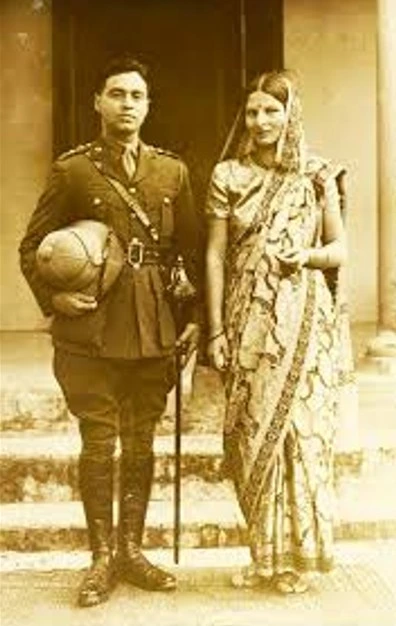
Savitri and Vikram Khanolkar
The unlikely designer of the Param Vir Chakra
Savitri Khanolkar’s life took an unexpected turn when she was entrusted with designing the Param Vir Chakra, the country’s highest military honour for gallantry. Shortly after India’s independence, Major General Hira Lal Atal, the Adjutant General, approached Savitri Khanolkar to design India’s highest gallantry award for combat, the Param Vir Chakra. Tasked with creating and naming independent India’s new military decorations, Major General Atal sought Khanolkar’s expertise due to her deep understanding of Indian culture, Sanskrit, and the Vedas. He believed her insights would help craft a design that truly embodied the spirit and ethos of India.
Major General Hira Lal Atal served in the British Indian Army from 1925 to 1947 before continuing his service in the Indian Army post-independence. He later became India’s first indigenous Adjutant General.
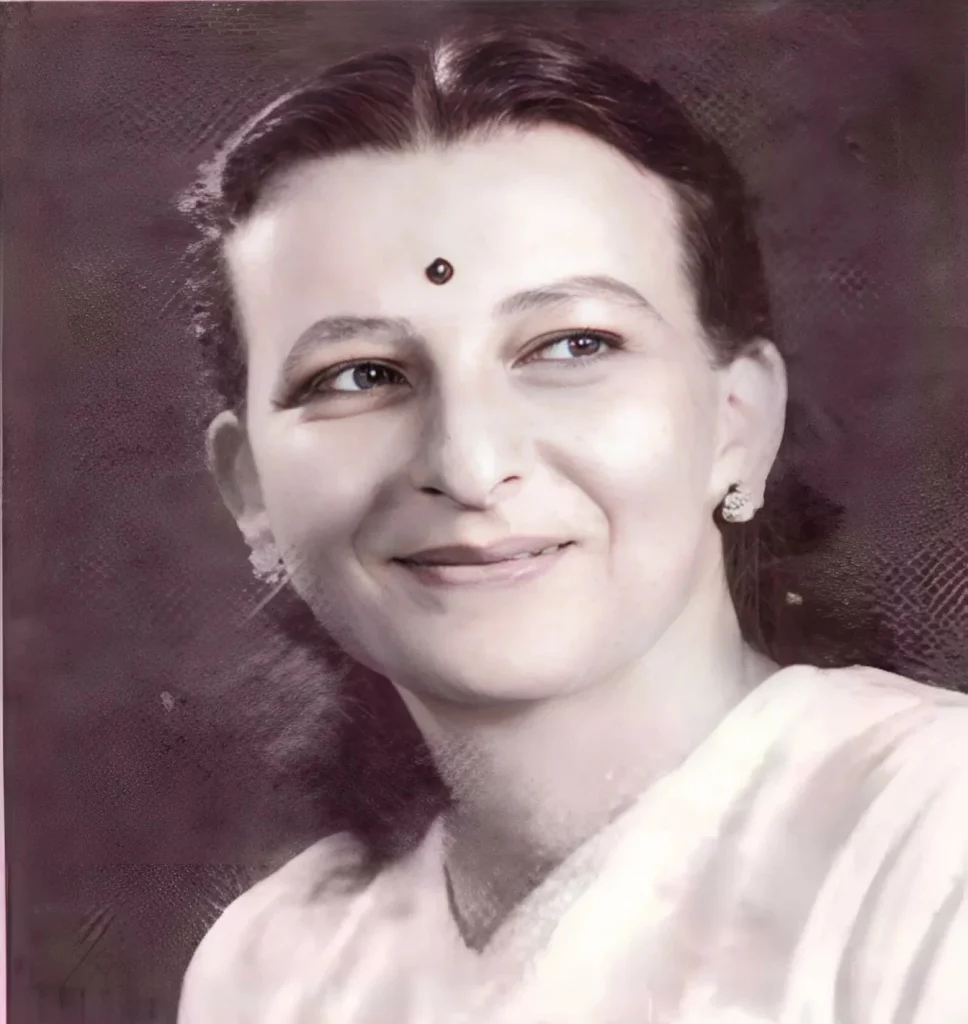
Savitri Khanolkar
For the design of the Param Vir Chakra, Savitri Khanolkar is said to have drawn inspiration from Hindu mythology, specifically, sage Dadhichi, who sacrificed his life so that Lord Indra could make the Vajra (thunderbolt weapon) from his spine. To honour Shivaji, whom she admired as one of India’s greatest warriors, she incorporated his sword into the Param Vir Chakra design, placing it alongside Indra’s Vajra for a truly symbolic tribute.
The Gallantry Awards
After India’s independence, the Government of India instituted its first three gallantry awards, the Param Vir Chakra, Maha Vir Chakra, and Vir Chakra on 26th January 1950, with retroactive effect from 15th August 1947. In a poignant coincidence, the first-ever Param Vir Chakra was posthumously awarded to Major Somnath Sharma of the 4 Kumaon Regiment who had sacrificed his life during the Indo-Pakistani War of 1947 in Kashmir. He was the brother-in-law of Savitri Khanolkar’s elder daughter.
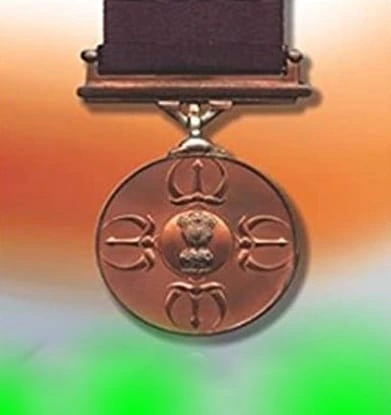
The Param Vir Chakra
A life dedicated to India
Beyond the Param Vir Chakra, Savitri continued her commitment to Indian culture. She translated ancient Sanskrit texts and deepened her knowledge of Hindu philosophy. Her dedication to India went far beyond as she lived her life with a deep-seated belief in its traditions and ideals.
Savitri remained a steadfast companion to Vikram Khanolkar, adapting to the challenges of being an army officer’s wife. She accompanied him through his postings, raised their children with a strong cultural foundation, and embraced the military lifestyle. Even after Major General Vikram Ramji Khanlokar’s passing in 1952, she continued her scholarly work.
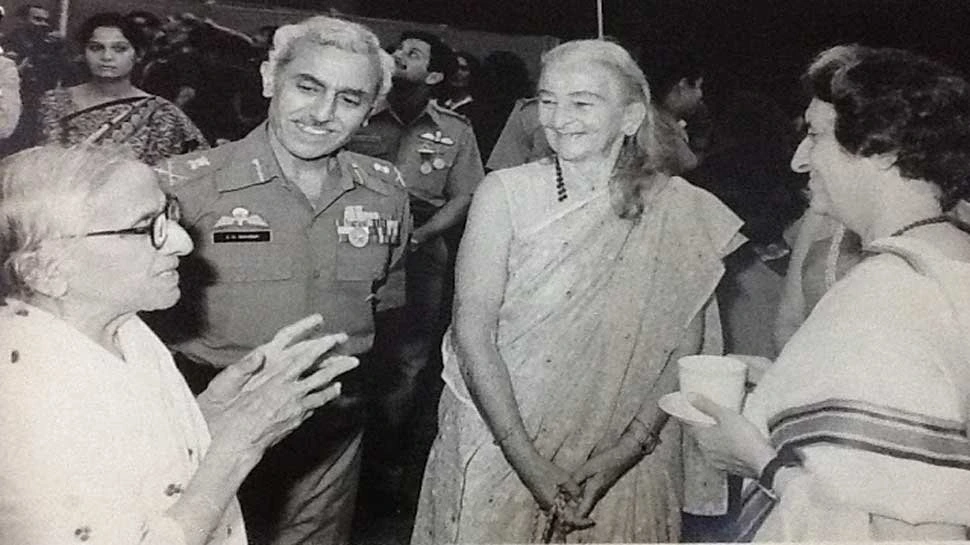
Savitri and Vikram Khanolkar with Indira Gandhi
Legacy continues
In her later years, Savitri Bai got deeply involved in social work, dedicating herself to helping soldiers, their families, and refugees displaced during the partition. She also sought solace in spirituality and eventually retired to the Ramakrishna Math., and authored a book titled Saints of Maharashtra, which remains widely read today.
Savitri Khanolkar’s legacy will always be connected with the Param Vir Chakra. Even decades after her passing in 1990, her influence endures. Every soldier who receives the Param Vir Chakra carries a piece of her legacy. Her contribution to India’s history remains immortalized.
Read a similar story of Noor Inayat Khan, the Indian who became Britain’s spy princess in WWII.

